
This feature is part of the CN&R’s 2024 election coverage.
If you follow E. 20th St. as east as it goes, the road comes to an end at a locked gate with a “No Trespassing” sign attached. The gate is connected to two long sections of the old stacked-rock walls that once marked the borders of ranches in the foothills. The view of grasslands dotted with blue oaks here along Chico’s edge is a reminder of the physical beauty that surrounds, and in many ways defines, our city.
Someone has made the most of this vantage point by installing a humble bench in the park strip along a sidewalk of the neighboring Belvedere Heights subdivision, and to sit there today is to have a front-row seat to the embattled playing field of the most recent controversial development proposed for these foothills: Valley’s Edge.

The 1,447-acre, 2,777-unit planned community would be Chico’s largest, and last January the city council adopted a series of resolutions to allow Valley’s Edge to move forward into the foothills. That approval triggered a lawsuit against the city filed in February by a coalition of environmental groups claiming it failed to comply with the California Environmental Quality Act in doing so. That was followed by a referendum drive by Chico Smart Growth Advocates that in short order gathered enough signatures to put the matter of Valley’s Edge to Chico voters during this Primary Election in the form of measures O and P.
Over the past few decades, questions of how this valley city grows have frequently been answered at the polls, and organized oppositions have more than once succeeded at keeping development from creeping further into the hills. To help locals make a decision on this latest proposal, the CN&R has attempted to cut through some of the local noise to present the Valley’s Edge matter as clearly as possible.
What exactly is on the ballot?
There are two separate but related measures on the ballot concerning the main requirements for Valley’s Edge to move forward—Measures O and P. Both need to pass in order for Valley’s Edge to proceed.
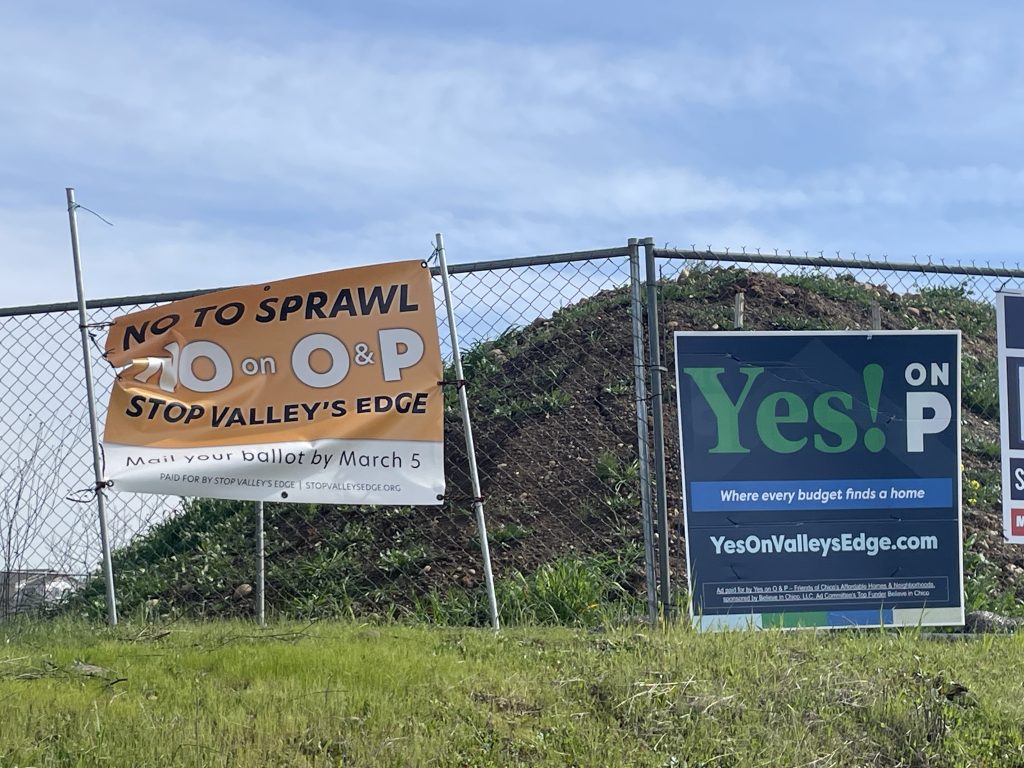
Measure O
The first measure concerns Resolution No. 08‐23, a General Plan amendment approved by the council at its Jan. 3, 2023, meeting allowing for the Valley’s Edge specific plan to replace the Doe Mill/Honey Run Special Planning Area (SPA).
The Land Use section of Chico’s General Plan includes five SPA’s. During a panel discussion on Valley’s Edge hosted by the Chico Chamber of Commerce in January, Chico Community Development Director Brendan Vieg explained that the SPA designation “identifies areas that are determined to have significant new growth potential, but that would require very detailed subsequent land-use planning in the form of a specific plan, a planned development, or some other type of comprehensive planning element.” Valley’s Edge, in this case, is that “subsequent” plan.
If Measure O passes, the Valley’s Edge specific plan replaces the Doe Mill/Honey Run SPA.
Measure P
The second measure deals with Resolution No. 09‐23, approved at the same council meeting, which approved the Valley’s Edge specific plan
The council’s resolution pointed out that Valley’s Edge was being approved because the site is “physically suitable” for the development, and that the specific plan is consistent with the General Plan in that it promised “a recreation oriented mixed-use development offering a broad range of housing types and densities; a Village Core and retail along Skyway Road; primary circulation connections to Skyway Road and East 20th Street; incorporating a community park; maintaining open space by clustering development; providing open space buffers along the north, south and easterly boundaries; utilizing visual simulations to ensure that visual impacts are minimized; incorporating special lighting standards to reduce impacts on the nighttime sky; preserving sensitive habitats; and addressing wildland fire considerations.”
If Measure P passes, the Valley’s Edge Specific Plan is approved.
What’s the Valley’s Edge plan?
The Valley’s Edge Specific Plan proposes building a two-and-a-quarter square-mile neighborhood on the east side of Chico. There’s potential for about 6,000 residents to move into the area over the 20-plus years that it will take to build out. The neighborhood would be bounded on the west by the Steve Harrison Memorial bike trail as well as existing residential neighborhoods (Doe Mill/Hillview Terrace/Belvedere Heights and Little Chico Creek Estates); on the north by Stilson Canyon; on the east by an existing 1.5 mile-long rock wall through the foothills; and on the south by the Skyway and Honey Run Road.
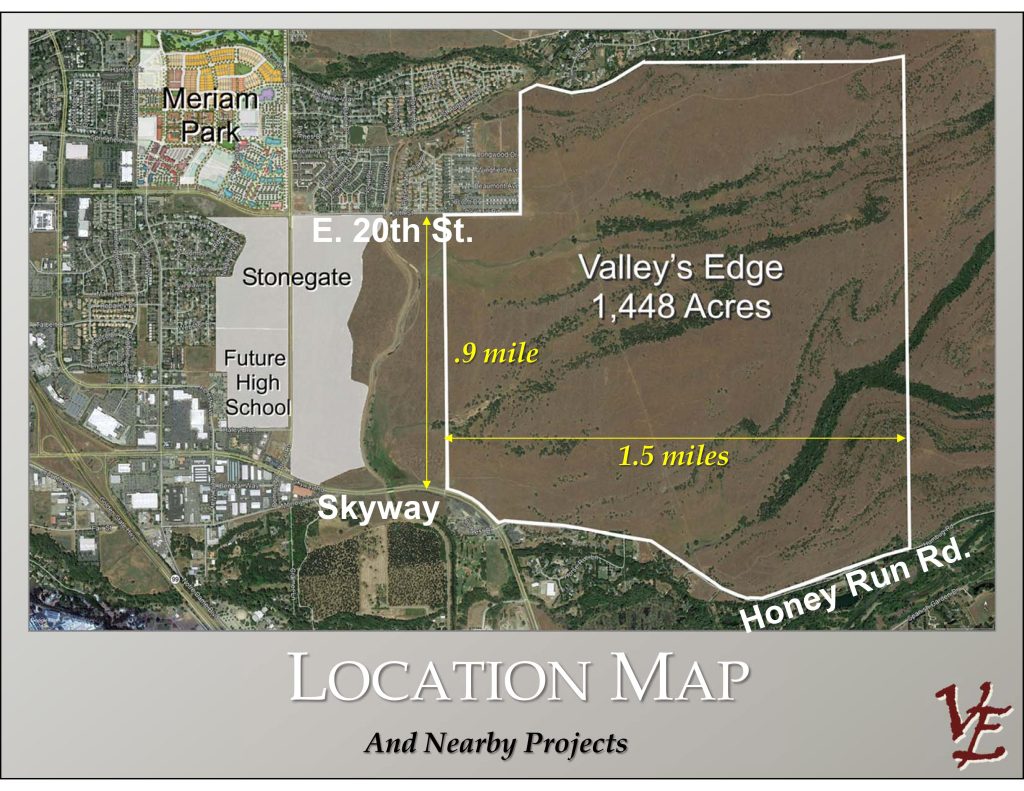
Valley’s Edge—as developer Bill Brouhard has pointed out during city council meetings—is a zoning plan, not a building plan. Ultimately, it will be up to contractors to build in compliance with the plan if it’s approved.
The vision spelled out in the specific plan by the petitioner/landowners, Brouhard and his Chico Land Investments, in consultation with city staff, mirrors what the council pointed to as the project’s merits: a mixed-use, recreation-oriented community with varied housing types “framed by natural open space corridors and served by a vibrant Village Core providing the commercial services and social hub of the community.”
The land-use breakdown for the proposal’s 1,447 acres would be:
- 600 acres for housing
- 56.3 acres for commercial
- 40.4 acres for roads
- 751.6 acres—more than half the project—for various public spaces, an elementary school, and parks
The largest open space is the 420-acres of “regional park” that would horseshoe the site’s proposed areas of construction, and extend into the eastern foothills, providing a permanent natural buffer for the development and the city. In January, the management of that area was ceremonially handed over to Chico Area Recreation District (pending Valley’s Edge approval), which would also be tasked with managing a separate community park.
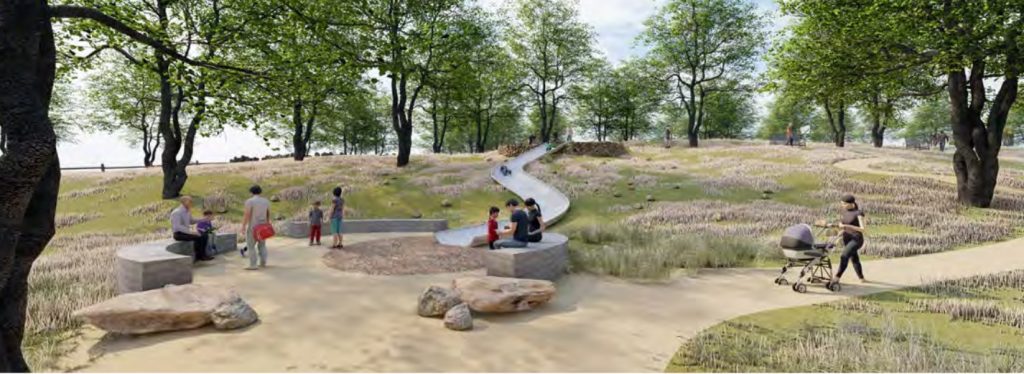
The CARD parks would be open to all, while the other neighborhood and “lineal” parks running through Valley’s Edge—a little over 200 acres worth—would be available only to neighborhood residents and non-residents who’ve registered with the development’s Homeowners Association (which would be charged with managing those areas).
The main entrance to Valley’s Edge would be via the Skyway, and this is where the plan’s “village core” (12.6 acres) and the rest of its commercial areas (43.7 acres) would be located.
As for the housing makeup, the plan’s residential land-use allotments would be:
- Nine acres for medium-high density (i.e., apartments—162 units)
- 100 acres for medium-density (953 units of condos, cottages, townhouses, etc.)
- 465 acres for low-density (split into two different zoning densities—131 acres with 276 units of custom-built homes and 333 acres with 1,372 units of production homes)
- 25 acres of very-low density (14 units of large-lot homes)
And roughly 41 percent of these residential properties would be set aside for seniors (55-plus) in an area encompassing roughly the southern half of the project.
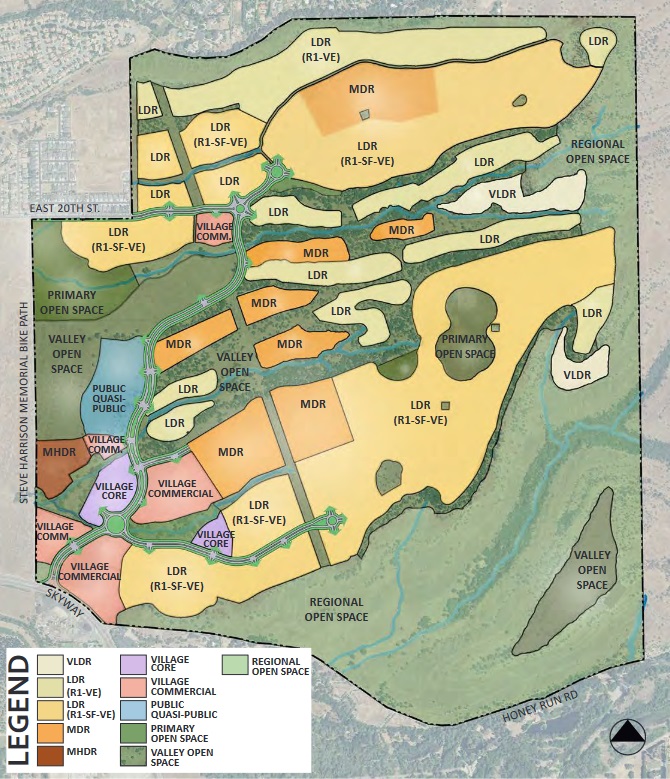
What are the opposition’s concerns?
The chief areas of concern for those opposing Valley’s Edge are environmental issues and housing needs. Below are highlights of some of the most significant ones:
Environmental issues:
- Wildlife and habitat: The Valley’s Edge Specific Plan’s environmental impact report (EIR) has been called into question by Smart Growth Advocates as well as the Sierra Club, AquAlliance and the Center for Biological Diversity (the three groups signed on to the lawsuit vs. the city and developers—which is on pause pending the outcome of the election). One of the chief concerns is what’s seen as inadequate mitigation, with the petition stating that the “EIR failed to adequately disclose, analyze and/or mitigate the project’s significant impacts to biological resources, including numerous species affected by the project.” As the EIR currently stands—all of the potential impacts to the areas of wildlife and habitat are characterized as “less than significant,” or will be after mitigation.
- Wildfire danger: While the plan boasts an array of firewise practices and has the blessing of a former city fire chief, opponents point out that the 2022 Community Wildfire Protection Plan lists nearly all areas along the eastern edge of the city’s limits—many of which border the Valley’s Edge site—as the “highest” fire danger in Chico.
- Viewshed: This is one of two areas in the EIR where Valley’s Edge concedes that the impact of the project—to the existing visual character of the area, in this case—is both significant and unmitigable, something that’s obviously at the forefront of the minds of those currently living near the site. A drive around the neighborhoods along its western border reveals dozens of “No on O & P” and zero “Yes” signs in residents’ yards.
- Greenhouse gases: This is the other unavoidable area of impact. There is potential for significant increase in greenhouse gases with the Valley’s Edge project beyond standards spelled out in the Northern Sacramento Valley Planning Area’s current air-quality attainment plan. “When you know that as a developer, it is a mystery to me why you would go ahead in this location,” said Smart Growth Advocates’ Eric Nilsson. “That will make it impossible for the climate action plan—which was unanimously passed by the city council—to meet their goals,” added fellow activist and Butte Environmental Advocates board member Susan Tchudi.
Unmet housing needs:
Perhaps the biggest bone of contention with Valley’s Edge is, as its opponents assert, that it doesn’t do enough to meet the area’s affordable housing needs. Objectively, the development is geared towards residents who can afford to purchase a new house, with 80 percent of the acres for housing (490) and 60 percent of the units (1,662) slotted for homes on the large low density and very-low density plots.

Detractors point out that this is one area where the Valley’s Edge developers have veered from the General Plan, specifically in the housing element’s suggested distribution of housing types in this special planning area. The Valley’s Edge plan shrinks the medium-high density offerings from 17 acres (and 324 units) to 9 acres (162 units); and bumps up the low-density offerings from 235 acres (494 units) to 465 acres (1,648 units).
Smart Growth Advocates suggests that even those original affordable housing suggestions miss the mark—and are indicative of some of the inadequacies of the General Plan, which was drafted before the recent string of wildfires in the county.
Before the Camp Fire, Paradise was a source of much of the county’s affordable housing. As is pointed out in Chico’s 2022 Housing Element Update, the fire destroyed approximately 14,000 resident units in Paradise, and 18,000 of the Camp Fire refugees relocated to Chico. That plus the economic wallop of the COVID pandemic has drastically altered the city’s housing needs.
“[Valley’s Edge proponents] keep saying, ‘This plan [has] been in the planning for 17 years,’” Tchudi explained. “And my response to that is, maybe it made some sense 17 years ago, but it doesn’t make sense now.”

As one preferred option for development, the No on O & P campaign points to other components of the General Plan’s Land Use Element, namely the development of “opportunity sites”—strategic areas like the old North Valley Plaza mall, or the Park Avenue corridor, “mixed-use areas that can accommodate growth.” The General Plan identifies 15 such areas, and Smart Growth Advocates believe there are potentially many more.
“We’re not anti-growth, but grow slowly, smartly, sustainably,” said Nilsson.
Haven’t we been here before?
Yes, many times. With the Greenline protecting farm lands to the west of Chico, developers have often set their sights on the eastern foothills and met formidable opposition nearly time. Valley’s Edge—as well its proposed next door neighbor, Stonegate, a city-approved subdivision currently held up by environmental litigation—are just the latest flashpoints.
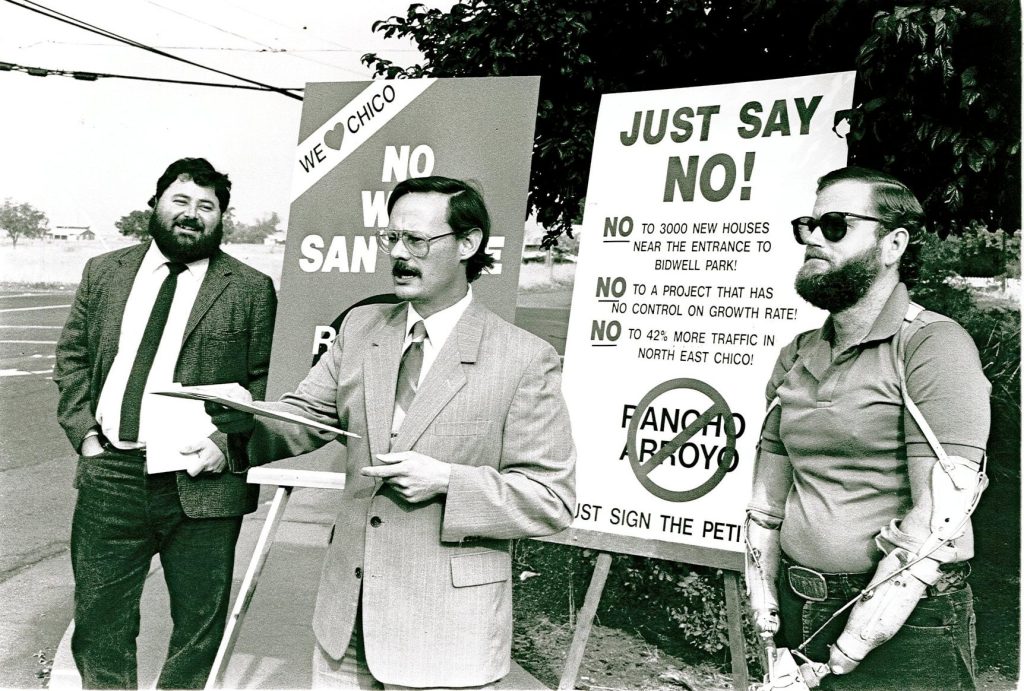
In 1988, Rancho Arroyo, a nearly 3,000 unit development proposed for 788 acres near the entrance of Upper Bidwell Park was defeated by a referendum led by the Friends of the Foothills group and their “No Way San Jose” campaign. The follow-up Bidwell Ranch proposal on the same property—spearheaded locally by Brouhard—cut the number of units in half and provided for much more open space, yet faced similar opposition. The city ended up purchasing the property for preservation.
So, yes or no?
It depends on how you answer the questions at hand: Have developers sufficiently addressed the environmental concerns? Does Valley’s Edge address Chico’s housing needs, and does it have to? Is this what you want for Chico? [CN&R Editor has some additional thoughts on the matter.]
Valley’s Edge has, for the most part, done an admirable job of sticking with the city’s General Plan for future growth. The biggest question might be: Have the environmental realities, spike in population and affordable housing shortages in the wake of Butte County’s devastating wildfires changed how Chico should be planning its future, and is the General Plan already out of date as a result?
As Vieg pointed out during that Chamber panel, local officials are unanimously on board: “City staff, the planning commission, and the city council all agree that the Valley’s Edge Specific plan was consistent with the vision that was laid out in the General Plan.”
In response to the suggestion that Valley’s Edge is a well-designed and well-thought-out plan, Smart Growth’s Nilsson offered: “If you concede that, you still have to recognize that it’s a beautiful plan for, at most, 5 percent of the entire Chico population, and all the adverse impacts to the rest of our community are huge. So, it’s not a good thing for Chico.”
While plenty of questions on the future growth of Chico will remain if Valley’s Edge fails, if it passes we know for certain that those changes will be permanent.
Links:
Voter Information Guide
Smart Growth Advocates of Chico
Yes on Valley’s Edge



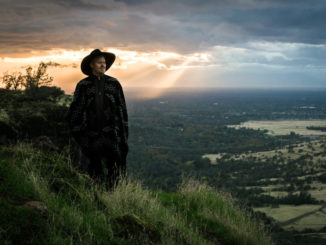
Be the first to comment